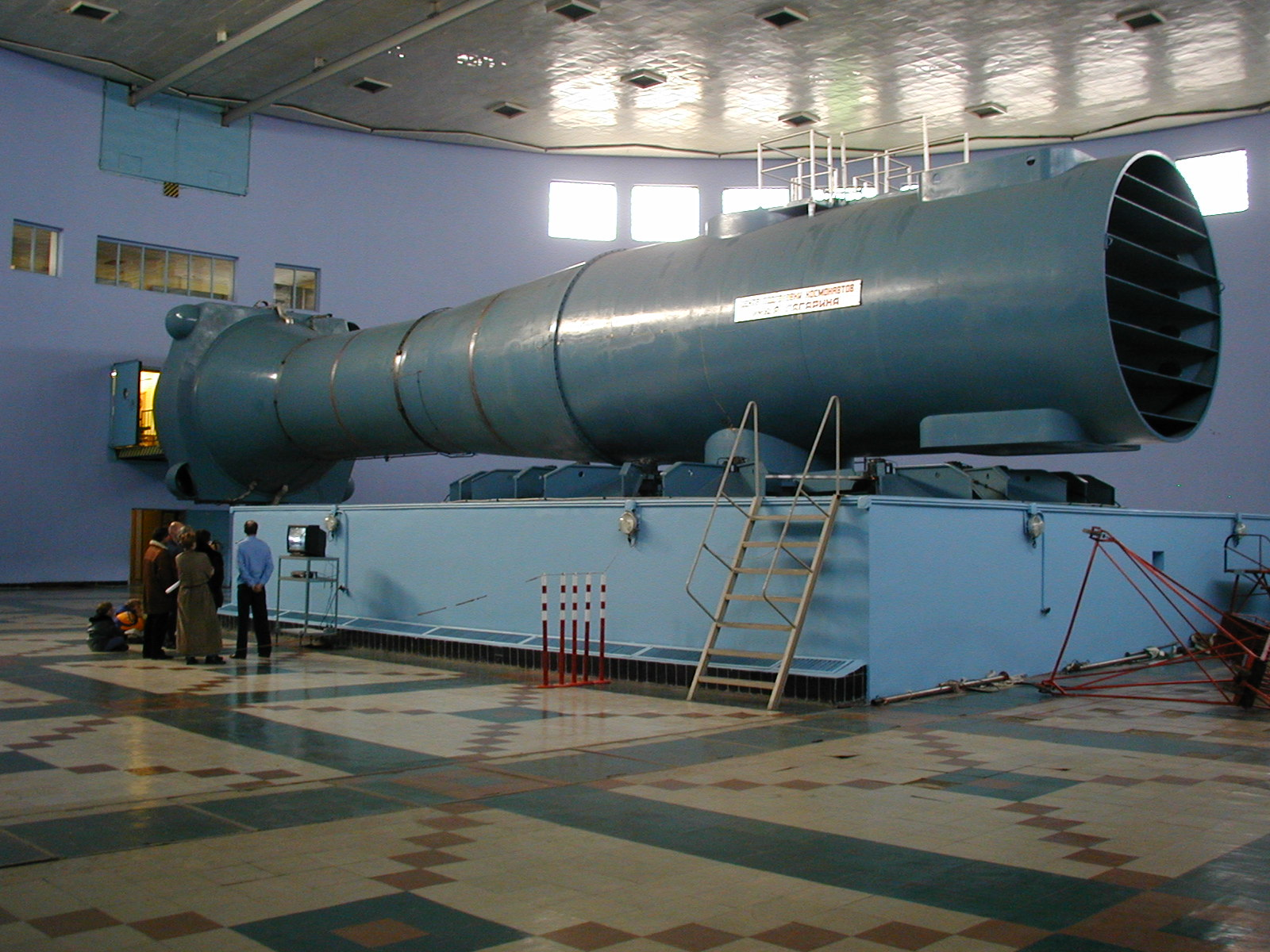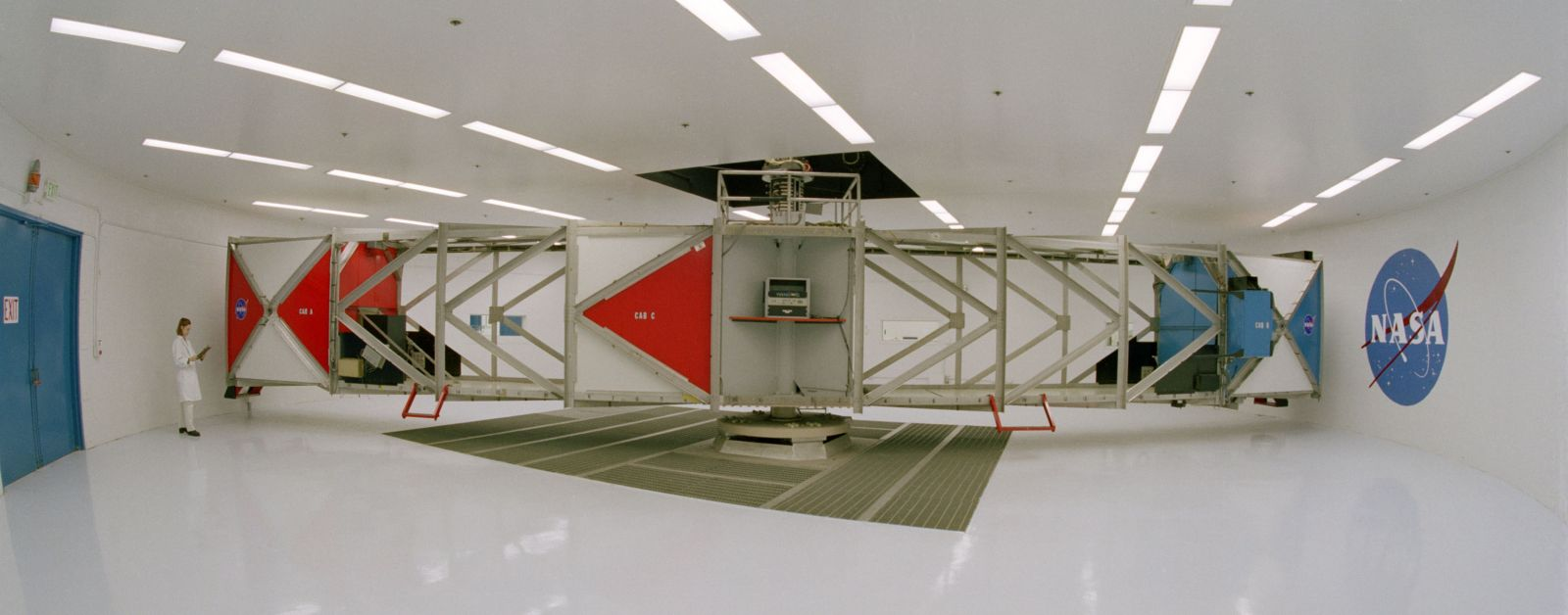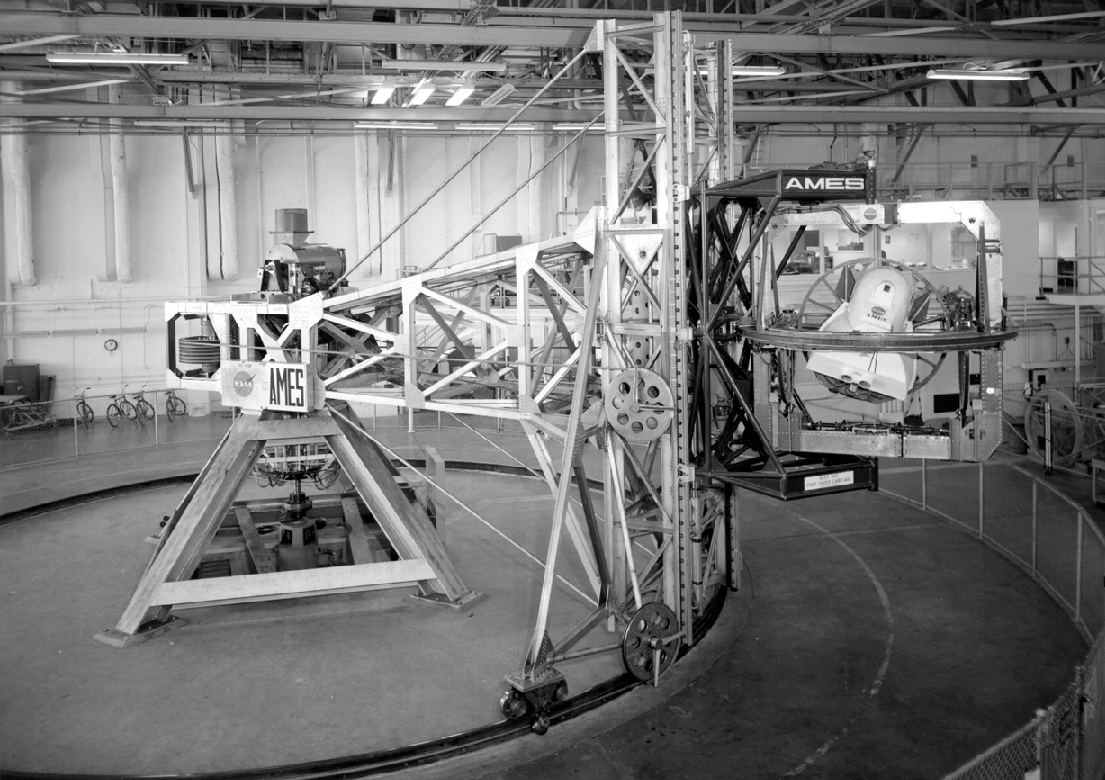Spin Doctors
Today, Spin Doctors. The University of Houston presents this series about the machines that make our civilization run, and the people whose ingenuity created them.
Consider the merry-go-round, that dizzying bit of playground hardware that challenges our childhood sense of daring. The effects of rapid spinning and the feeling of forces that make you feel heavy and try to throw you off are exhilarating. But this is but a tame version of the human centrifuge, which uses a hefty drive motor to spin a large arm with a seat or cabin attached at the end. The resulting rotation provides formidable radial acceleration forces; by positioning a human at the end of the arm in a desired orientation, you can precisely direct that force. The dimensionless quantity known as "G" denotes multiples of the force of Earth's gravity that result; 3 G's effectively means you experience a force of three times your body weight.

The TsF-18 Centrifuge in Star City, Russia, on which I have done several training sessions. With a moment arm of 59 feet and capable of monstrous G loads, we sometimes affectionately refer to this as the MOAC; 'mother of all centrifuges'
Photo Credit: Wikipedia.
Human centrifuges became a staple tool shortly after the birth of aviation. Tight turns in ever more capable aircraft produced large G forces that could be debilitating to pilots. Using centrifuges could recreate the acceleration profiles of aircraft to study the human response, inform aircraft design, and test countermeasures to these forces in a controlled environment. Benefits to aviation and spaceflight have been rich, but as often the case, alternate uses are ripe for exploitation.

The 20G Centrifuge at the NASA Ames Research Center in Mountain View, California, has provided a research and training venue since the 1960's
Photo Credit: NASA.
In 1968, a 63 year old man survived a shooting during a robbery, but was left with a bullet fragment in the left lateral ventricle of his brain. Ventricles are chambers in the brain in which cerebrospinal fluid resides. This vital fluid follows a flow pattern that depends on unobstructed circulation. The bullet fragment was floating freely in the left ventricle but seemed to be causing no harm and was left in place. However, X-rays taken one month later showed that the fragment had moved to the middle ventricle, threatening to obstruct the circulation pathway. By positioning the patient on his left side and applying light hand-blows to his head, doctors were able to move the fragment back to the side ventricle. But how to keep it out of harm's way? Surgical removal of such a mobile target was risky. An enterprising team of NASA physicians from the Ames Research Center in Mountain View California were enlisted to consider a novel approach.
Gelatin molds with a consistency comparable to brain tissue were cast and representative bullet fragments were implanted. It was determined that loads of 4-6G should be sufficient to lodge the fragment into the wall of the ventricle and stabilize its position. Using the 5 degree of freedom centrifuge at Ames, the patient was positioned precisely so that the acceleration axis would move the fragment to an anatomically safe location. After an initial tolerance run, the patient was spun up to 5G for about 20 seconds to move the fragment into position, then given a pulse of 6G for about 3 seconds in the hope of embedding the fragment into the tissue. To shorten the story, the procedure worked brilliantly. X-ray studies six months later showed the bullet fragment stable in its new and permanent location and the patient leading an active normal life.
I can't think of a better example of applying ingenuity to capabilities that span traditional boundaries. In any case, this gives new meaning to the notion of space program spin-offs.
I'm NASA astronaut Michael Barratt, and like the University of Houston, we're interested in the way inventive minds work.
Centrifuge exposures to high G forces are bread and butter training for both high performance aviation and spaceflight. A major difference between the two is the axis of the body through which this load is delivered. For the jet pilot, these forces are primarily felt during tight, high speed turns and are in the head to foot direction. This tends to force blood away from the brain, hence the need for G suits that squeeze the legs and straining exertions that try and keep blood flowing to the brain to maintain consciousness. For spaceflight, these forces are mostly chest to back, since we position astronauts in a recumbent position for launch and landing. There is not such a worry about maintaining blood flow to the brain as just compressing the rib cage. I have been up to 9G in a centrifuge in this orientation - it feels like there is a horse sitting on your chest. For both of these cases you can just orient the gondola at the end of the rotation arm with the seated human in the desired position and let 'er spin.
The device used in the surgical case was a rather unique machine, built largely of spare parts and brought online in 1961 at the NASA Ames Research Center. I refer to it as a centrifuge in the script, but the full and proper name was the Five Degrees of Freedom Motion Simulator.

The Five Degrees of Freedom Motion Simulator at the NASA Ames Research Center
Photo Credit: NASA.
As you can see from the photograph, the gondola at the end of the 30 foot centrifuge arm was capable of complex motions that allowed dynamic reorientation of the body in relation to the G loads induced by spinning about the central hub. This could simulate complex aircraft or spacecraft motion environments, or in the case described above, allow precise positioning of a human subject to direct the G load exactly where you want it.
Two articles describe the case of the bullet-wound patient in medical journals; here are references.
Pelligra R, Stein S, Markham J, Lippe P, Noyes J, Dickson J, Skrettingland K. Centrifuge as a therapeutic device. Aerosp Med. 1970 Apr;41(4):451-5.
Markham JW, Stein S, Pelligra R, Lippe P, Noyes J. Use of centrifuge in the treatment of an intraventricular metallic foreign body. Technical note. J Neurosurg. 1971 Jun;34(6):800-4.
Unfortunately these require purchase or special order. However you can find most of the details in this available online source, including X-ray imagery showing the bullet fragment in the brain. This is a recounting of the medical case in Recent Advances in Aerospace Medicine: Proceedings XVIII International Congress if Aviation and Space Medicine. Amsterdam 1969. Edited by D.E. Busby. Click here.
Further words on the Five Degrees of Freedom Motion Simulator can be found here.
As you might guess, this case is legendary in aerospace medicine lore, and flight surgeon emeritus Dr. Ralph Pelligra continues to serve NASA to this day.
This episode was first aired on February 18, 2020